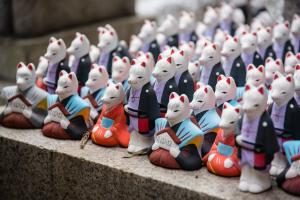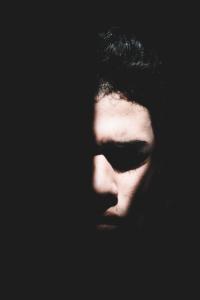
This post is a part of the Patheos Catholic Channel series, “Catholicity: Identity and Its Discontents.” Read more here.
To give some of the flavour of this symposium, Steel Magnificat has furnished a post about what the public face of Catholicism appears to be or should be (and just added another post on the normalcy of Catholic culture), while A Little Bit of Nothing has looked at the relationship between identity and gift. Jappers and Janglers, meanwhile, has provided a reflection on having Christian frenemies, Suspended in Her Jar looked at being Catholic and feminist, and Justin Tse of Eastern Catholic Person has framed a piece in the context of a prayer to the Theotokos.
The contribution made by this blog, largely for biographical reasons, concerns that often neglected interface between being Catholic and being a migrant, particularly being a non-western migrant to the anglosphere (saying “the West” becomes a bit awkward when one lives in Australia, although it is west of New Zealand).
From Pope Francis to Philip Jenkins, we are seeing analyses trickle in about the growing role that migrants will play in the Church. There is the numerical aspect of this phenomenon, where a small get growing proportion of congregations are hailing from other countries. From interactions with a good number of Catholic friends who are native born, there is this unarticulated sense that migrants are the new footsoldiers for the Church’s priorities set prior to their arrival, and in many ways they will be right. Migrants are now taking up roles in the Church left behind by dwindling numbers of native born Catholics, in reading rosters, choir lofts, soup kitchens and parish offices everywhere.
There is another sense, however, that leaves a smaller yet still significant number of native born Catholic friends, if not freaking out, at least feeling unsettled at the prospect of change in the character of the Church. The unease can be loosely described in this way: though the physical roles in the Church are being taken up, there are growing signs that migrants are not exactly “getting on with the program”, doing things the way things were done in the Church before their arrival, having the same priorities of the native born upon being naturalised, and most importantly, having the same conception of what being a Catholic means, with an exhausting array of diversely exhaustive laundry lists of the indispensable ingredients of being Catholic. There is a faint memory of one acquaintance who, after attending a Mass in another language in Australia, rhetorically asked why one cannot be satisfied with a “normal, neutral and western mass” and bring instead unnecessary foreign additions like another language into the realm of worship. Another once made the remark that Catholicism was being undermined by migrants because of their foreign ways. This is not in terms of their food or dress, but in terms of their thinking and concerns.
This second acquaintance will be right in one respect. As Jensen noted in The Next Christendom, the growth of migrants in the Church does mean that the borders of the concerns of the Church will shift, change, and perhaps expand. Implied in the book also is the idea that, for the migrant, what it means to be Catholic is very much tied to what it means to be a migrant. Being the composite of body and soul makes it hard to prise biography from soteriology, and so one should not be surprised that, as the numerical proportion of migrants relative to the rest of the Church grows, the social, political, cultural and linguistic concerns will gradually weave into a fabric of the “normal, neutral and western”.
By the same token, the migrant will also have struggles of their own in their living amongst their native born neighbours, for they too will have their preconceptions of what being Catholic means rightfully challenged. Whilst it may be difficult to prise biography from soteriology, being Catholic – being universal – also means being able to discern which aspects of their particular identity are improperly hooked onto the wagon of universality, as their love of their land of their birth blinds them to the love of the land of their final destination. Not their country of domicile, but the City of God.
Only this is not something that is unique to the migrant. The native born, insofar as they are of the “normal, neutral and western”, will also have to discern their own improper attachments of what it means to be Catholic. Sin is an equal opportunity employer, and so the loves that blind us to what is needed for our eternal end will equally afflict the native born and the migrant.
Indeed, in many respects, the migrant can act as the icon of one of the key struggles of being in a Church for whom the incarnation and sacramentality – the hypostasis of the divine and the material – is taken seriously. The migrant externalises for us what for many might think is purely spiritual and internal, and exposes to us our own propensity to love our own identity markers over and above our love of God, part of what Augustine called in City of God “the lust to dominate”. Whilst it is true that, in our finitude, our love of God has to be filtered through our love for the things that make up our identity, we must be vigilant that we do not let that love become the only way for anyone to love the lord, thereby turning that love into an occasion to dominate others. As the life of the migrant is a life of constant leaving behind and also integration, so is the life of all of us in the Church a life of purification through our being filtered by the Eucharistic Lord. We may stumble and fail to recognise the dividing line, for the simple reason that the dividing line can only be seen through a glass darkly, only coming clear in the life of the world to come.












